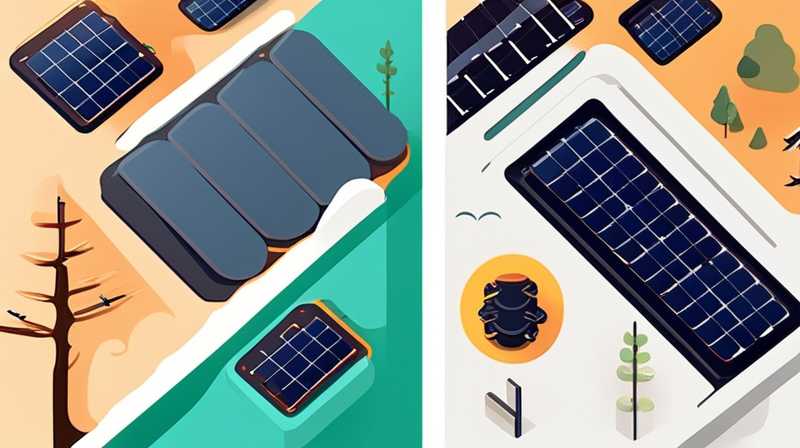
1. Understanding the Terrain and Conditions
Transporting solar panels to mountainous regions involves intricate planning and preparation. Navigating rough terrains, considering weight and size limitations, and ensuring protection against extreme weather are vital aspects to address. The terrain typically presents numerous challenges such as steep inclines, rocky surfaces, and limited accessibility, which can significantly complicate the transportation process. It’s crucial to factor in these conditions when determining the best methods and tools for transportation.
2. Selecting Appropriate Equipment
The choice of equipment is critical for carrying solar panels safely and efficiently across mountainous landscapes. Utilizing sturdy trailers, off-road vehicles, or even pack animals can be advantageous depending on the terrain. For more rugged and remote areas, all-terrain vehicles equipped with winches and reinforced suspension systems may be necessary to manage the difficult landscape effectively. Additionally, evaluating the distance to the final installation site will help in selecting the most suitable transportation method.
3. Understanding Weight Distribution
Weight distribution is a key factor when transporting solar panels. Improper distribution can lead to tipping or damage to the panels during transport. It’s essential to load the panels evenly, securing them tightly to prevent movement. Protective padding should be used to cushion the panels against shocks and vibrations encountered on the journey. This approach minimizes the risk of breaking or scratching the delicate surfaces, ensuring the panels remain intact upon arrival.
4. Preparing for Weather Challenges
Mountainous regions often experience unpredictable weather conditions. Rain, snow, and harsh sun can all affect the integrity of solar panels during transport. Ensuring that the panels are adequately covered and protected against elements like moisture and extreme temperatures is paramount. Using waterproof tarps or specialized enclosures can help safeguard the panels during transport, preventing potential water damage or overheating. Implementing this precaution can significantly extend the lifespan of the solar equipment.
5. Safety Protocols During Transportation
Establishing safety protocols is essential when transporting solar panels, especially in remote and rugged mountain locations. Proper training for personnel involved in the transport process ensures a secure and efficient operation. Workers should be equipped with knowledge on handling heavy equipment safely and be familiar with emergency procedures in case of accidents. All safety gear should be utilized, including helmets, gloves, and reflective jackets, to protect workers and mitigate risks during the transportation process.
6. Assessing Local Regulations
Before initiating transportation, it is crucial to research local regulations regarding the transport of solar panels in mountainous regions. Some areas may have specific guidelines for transporting oversized or heavy items, especially through national parks or protected lands. Ensuring compliance with these laws helps avoid fines and delays. Working closely with transportation authorities or local agencies can provide insight into permits required and any restrictions in the area.
7. Planning the Route
Strategically planning the route is necessary for effective transportation of solar panels. Consider factors such as road conditions, elevation changes, and potential obstacles along the way. Utilizing mapping tools or consulting with local guides can help identify the safest and most efficient routes. Having alternative routes in mind is also beneficial in case of unforeseen road closures or dangerous weather conditions.
8. Unloading and Installation Considerations
Upon arrival at the installation site, special care must be taken during the unloading process. Positioning the panels correctly to avoid damage and ensure they’re ready for immediate installation is vital. Using lifting equipment or cranes may be required for heavy panels, particularly in areas with limited access. Organizing a structured plan for unloading will facilitate a smooth transition from transportation to installation, enhancing overall efficiency.
FAQs
WHAT EQUIPMENT DO I NEED TO TRANSPORT SOLAR PANELS?
When transporting solar panels, having the right equipment is crucial to ensure safety and efficiency. A sturdy vehicle, such as an off-road truck or a specialized trailer, is typically necessary to navigate rugged terrain. Additionally, protective gear such as tarps or padded cases will safeguard the panels against environmental damage. Using tools for secure fastening and handles to lift the panels is also important, particularly in steep or uneven landscapes. Furthermore, if the panels are heavy, considering assistance from hoisting equipment or cranes can facilitate a better unloading process upon arrival.
HOW CAN I SECURE SOLAR PANELS DURING TRANSPORT?
Securing solar panels during transportation is vital to prevent damage. The first step is to ensure they are evenly distributed to maintain balance. Using ratchet straps or tie-downs can help to hold the panels in place, preventing any lateral movement. Additionally, adding layers of foam or soft padding can provide cushioning against vibrations. Checking the load regularly during transit, especially on rough paths, ensures that everything remains secure and can prevent accidents before they happen.
WHAT ARE THE COMMON MISTAKES TO AVOID WHEN TRANSPORTING SOLAR PANELS?
There are several common mistakes to avoid during the transport of solar panels. One major error is neglecting to protect panels from environmental factors, such as rain or snow that can lead to damage. Another frequent mistake involves improper loading, where panels are not distributed evenly or are inadequately secured. Failing to check weight limits on vehicles can also result in dangerous situations. Lastly, individuals often overlook the importance of planning routes that account for potential obstacles or challenging conditions, leading to delays and additional complications.
KEY TAKEAWAYS
Safely transporting solar panels to mountainous regions requires meticulous planning and consideration of various factors. With appropriate equipment, careful weight distribution, weather precautions, and safety protocols, one can ensure the solar panels reach their destination intact and ready for installation.
Bold care in profession and diligence will yield successful transportation outcomes.
Original article by NenPower, If reposted, please credit the source: https://nenpower.com/blog/how-to-transport-solar-panels-on-the-mountain/


